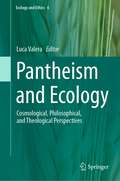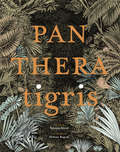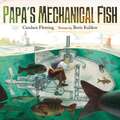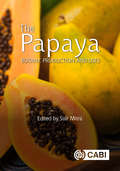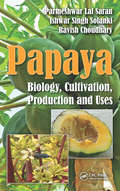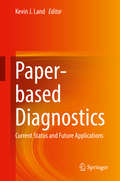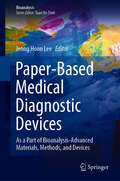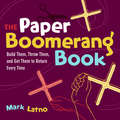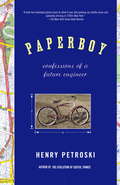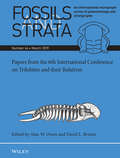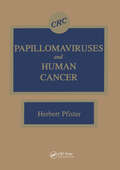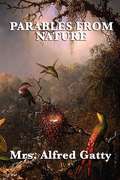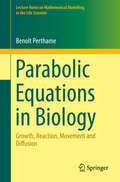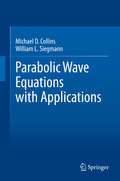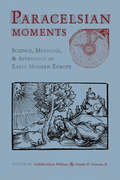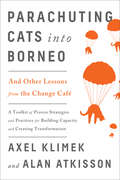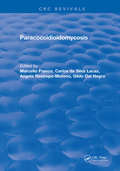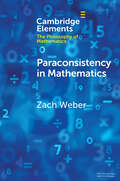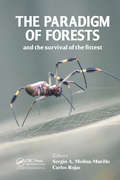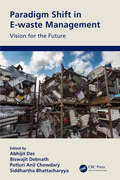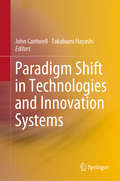- Table View
- List View
Pantheism and Ecology: Cosmological, Philosophical, and Theological Perspectives (Ecology and Ethics #6)
by Luca ValeraThis book provides a comprehensive overview of the relationship between pantheism and ecology, particularly considering different cultural approaches and diverse religious, theological, and philosophical traditions. Environmental ethics arises from the dangerousness and harmfulness of human beings with respect to nonhuman species and, more generally, with respect to the environment. A common starting point for environmental ethics standpoints is that human beings are responsible for damaging nature. The famous four laws of ecology drafted by Barry Commoner precisely express this guilt on the part of human beings, who very often voluntarily violate the behavioral indications that emerge from nature itself. These aspects concern environmental ethics outlooks. Eco-theology, then, takes a further step: not only do we damage the ecosystem but also, as many authors suggest, when we humans destroy the natural world, we are wounding God. Such an idea implies a possible coincidence of God with the natural world –or the ecosystem. From this assumption, different questions may emerge: what is the kind of coincidence between God and the natural world? Are God and the ecosystem coextensive? If so, are we re-sacralizing the natural world and grounding intrinsic values in theological postulates and statements? These questions lead us to reconsider the cosmological assumptions that ground our environmental judgements, from theology to different religious traditions and cultures to philosophical worldviews. In particular, we will focus on the cosmological assumptions of pantheism (considering its differences with panentheism), discussing the symmetrical (or asymmetrical) relationships between God and the finite ways in which God manifests Godself.In this regard, the book is divided into three main parts: in the first part, the question of pantheism is approached from different traditions and with a special focus on the main thinkers in the history of thought, from Greek Stoicism to the present day. In the second part, some current ecological concerns are considered in relation to pantheistic cosmology: the authors will deepen issues from the discussion of the different “pan-conceptions” to the problem of evil, to Anthropocene. Finally, in the third part, the different chapters will focus on ethical issues in the field of the current environmental crisis with a huge connection with the pantheistic cosmologies. This book is oriented to a wide public, interested in environmental issues and looking for an approach from different cultures and traditions. Evidently, due to its “academic” nature, this book is also intended to be a great support for researchers interested in eco-theology and, more specifically, in the relationship between pantheism and ecology.It is not, in this sense, a “classic” book on environmental ethics, but a book that delves into the fundamentals of environmental philosophy, privileging the Ibero-American approach.
Panthera Tigris
by Sylvain AlzialWhile reading an encyclopedia, a highly educated scientist realizes that he doesn&’t know anything about tigers! He begins studying them until he can rattle off every tiger fact imaginable, including their habitat (jungles and marshy areas), their average weight (300-500 pounds), and their scientific name (Panthera tigris). But when he hires a guide to take him to see a tiger in person, the scientist discovers that he might not quite know everything.With deadpan humor and illustrations that perfectly complement the story, Panthera Tigris will delight nature lovers and budding scientists.
Papa's Mechanical Fish
by Candace FlemingCandace Fleming and illustrator Boris Kulikov pair up to tell a fun story about a real submarine inventor in Papa's Mechanical FishClink! Clankety-bang! Thump-whirr! That's the sound of Papa at work. Although he is an inventor, he has never made anything that works perfectly, and that's because he hasn't yet found a truly fantastic idea. But when he takes his family fishing on Lake Michigan, his daughter Virena asks, "Have you ever wondered what it's like to be a fish?"—and Papa is off to his workshop. With a lot of persistence and a little bit of help, Papa—who is based on the real-life inventor Lodner Phillips—creates a submarine that can take his family for a trip to the bottom of Lake Michigan.
Papa's Mechanical Fish
by Candace Fleming Boris KulikovClink! Clankety-bang! Thump-whirr! That's the sound of Papa at work. Although he is an inventor, he has never made anything that works perfectly, and that's because he hasn't yet found a truly fantastic idea. But when he takes his family fishing on Lake Michigan, his daughter Virena asks, "Have you ever wondered what it's like to be a fish?"―and Papa is off to his workshop. With a lot of persistence and a little bit of help, Papa―who is based on the real-life inventor Lodner Phillips―creates a submarine that can take his family for a trip to the bottom of Lake Michigan.
The Papaya: Botany, Production and Uses (Botany, Production and Uses)
by Amalendu Ghosh Robert E Paull Víctor Galán Saúco Edward Evans Rebecca Ford S H Ahmad Christian Alcocer Fredy H Ballen Luis Barboza-Barquero Paul R Campbell A Chan Fure-Chyi Chen Nancy Jung Chen Ting-Chi Cheng Shih Wen Chin Rod Drew Franscisco Espadas Humberto Estrella João Paulo Fabi Gabriela Fuentes Amaranta Giron Julián Cuevas González Eric Guevara Marco V Gutiérrez-Soto Eudaldo Pérez Hernández Jian-Zhi Huang Víctor M Jiménez Chutchamas Kanchana-Udomkan Matiyar Rahaman Khan Chen-Yu Lee Wen-Li Lee Pauziah Muda M Munirah Usana Nantawan Eder Dutra Resende Jorge Manuel Santamaria-Fernandez S K Sharma N I Shukor N E Tajidin Carlos Talavera Lynton L Vawdrey Ziwei ZhouPapaya (Carica papaya) is an important and widely-cultivated tropical fruit, grown in more than 60 countries of the world. Global papaya production has grown significantly over the last few years, mainly as a result of increased production in India. Papaya has become an important agricultural export for developing countries where export revenues of the fruit provide a livelihood for thousands of people, especially in Asia and Latin America. This book includes coverage of recent research developments with the potential to improve crop yields and quality. New research has contributed to our understanding of the crop environment, plant growth and physiology of tree and fruit development with implications for both breeding and cultivation. It looks at how analysis of the papaya genome promises new, faster breeding techniques to improved cultivars and how these and other advances are helping to tackle disease like papaya ring spot viruses and major pests which cause significant losses. Key features include: updated information for sustainable papaya cultivation research developments in tackling the major production and post-harvest problems interdisciplinary and collaborative research With contributions from international experts, the book presents the current state of knowledge concerning the history, physiology, culture and marketing of papaya throughout the world. It is an essential resource for researchers, growers and all those involved in the papaya industry.
Papaya: Biology, Cultivation, Production and Uses
by Parmeshwar Lal Saran Ishwar Singh Solanki Ravish ChoudharyWith coverage that ranges from basic information to advanced research, Papaya: Biology, Cultivation, Production and Uses pulls together the vast literature scattered over various sources into one practical resource. The book provides a solid review of papaya biology, production, and uses supported by color photographs and illustrations. It covers p
Paper-based Diagnostics
by Kevin J. LandThis book explores the status of paper-based diagnostic solutions, or Microfluidics 2.0. The contributors explore: how paper-based tests can be widely distributed and utilized by semi-skilled personnel; how close to commercial applications the technology has become, and what is still required to make paper-based diagnostics the game-changer it can be. The technology is examined through the lens of the World Health Organization’s ASSURED criteria for low-resource countries (Affordable, Sensitive, Specific, User-friendly, Rapid and robust, Equipment-free, and Deliverable to end-users). Its applications have to include: health technology, environmental technology, food safety, and more. This book is appropriate for researchers in these areas, as well as those interested in microfluidics, and includes chapters dedicated to principles such as theory of flow and surface treatments; components such as biomarkers and detection; and current methods of manufacturing. Discusses how paper-based diagnostics can be used in developing countries by comparing current diagnostic tests with the World Health Organization's ASSURED criteriaExamines how paper-based diagnostics could be integrated with other technologies, such as printed electronics, and the Internet of Things.Outlines how semi-skilled personnel across a variety of fields can implement paper-based diagnostics
Paper-Based Medical Diagnostic Devices: As a Part of Bioanalysis-Advanced Materials, Methods, and Devices (Bioanalysis #10)
by Jeong Hoon LeeThis book disseminates information on paper-based diagnostics devices and describes novel paper materials, fabrication techniques, and Basic Paper-based microfluidics/electronics theory. The section on sample preparation, paper-based electronics/sensors for developing paper-based point-of-care (POC) systems also contains detailed descriptions. In the application sections this book covers sensing technique for DNA/RNA, bacteria/virus and integration of lateral flow assay. The book provides deep understanding and knowledge of paper-based diagnostic device development in terms of concept, materials, fabrication and applications.
The Paper Boomerang Book: Build Them, Throw Them, and Get Them to Return Every Time (Science in Motion)
by Mark LatnoA detailed reference on the latest craze in lightweight aeronautics, this manual shows how to build and throw paper boomerangs. Techniques for mastering the basics will help beginners, while techniques for impressive throws--such as the behind-the-back toss; the boomerang juggle; the under-the-leg catch; and the dreaded double-handed, backward, double-boomerang throw--will thrill even the most advanced boomeranger. A history of the device and the physics behind its circuitous flight are also included, making this the only comprehensive reference on this fascinating toy.
Paper Microfluidics: Theory and Applications (Advanced Functional Materials and Sensors)
by Shantanu Bhattacharya Sanjay Kumar Avinash K. AgarwalThis volume provides an overview of the recent advances in the field of paper microfluidics, whose innumerable research domains have stimulated considerable efforts to the development of rapid, cost-effective and simplified point-of-care diagnostic systems. The book is divided into three parts viz. theoretical background of paper microfluidics, fabrication techniques for paper-based devices, and broad applications. Each chapter of the book is self-explanatory and focuses on a specific topic and its relation to paper microfluidics and starts with a brief description of the topic’s physical background, essential definitions, and a short story of the recent progress in the relevant field. The book also covers the future outlook, remaining challenges, and emerging opportunities. This book shall be a tremendous up-to-date resource for researchers working in the area globally.
Paperboy: Confessions of a Future Engineer
by Henry PetroskiHenry Petroski has been called "the poet laureate of technology." He is one of the most eloquent and inquisitive science and engineering writers of our time, illuminating with new clarity such familiar objects as pencils, books, and bridges. In Paperboy, he turns his intellectual curiosity inward, on his own past. Petroski grew up in the Cambria Heights section of New York City's borough of Queens during the 1950s, in the midst of a close and loving family. Educated at local Catholic schools, he worked as a delivery boy for the Long Island Press. The job taught him lessons about diligence, labor, commitment, and community-mindedness, lessons that this successful student could not learn at school. From his vantage point as a professor, engineer, and writer, Petroski reflects fondly on these lessons, and on his near-idyllic boyhood. Paperboy is also the story of the intellectual maturation of an engineer. Petroski's curiosity about how things work--from bicycles to Press-books to newspaper delivery routes--was evident even in his youth. He writes with clear-eyed passion about the physical surroundings of his world, the same attitude he has brought to examining the quotidian objects of our world. Paperboy is a delightful memoir, telling the dual story of an admirable family in a more innocent, bygone America, and the making of an engineer and writer. This is a book to cherish and reread.
Papers from the 6th International Conference on Trilobites and their Relatives (Fossils and Strata Monograph Series #64)
by Alan W. Owen David L. BrutonA volume from a monograph series featuring seven papers on trilobites with brief summariesThis research volume is entitled Papers from the 6th International Conference on Trilobites and their Relatives. It's Volume 64 within the Fossils and Strata monograph series. The research compilation originated from a 2017 conference in Estonia. Seven papers on trilobites are included with summaries in the publication. The papers' topics cover trilobites from the Early Cambrian to the Late Devonian.
Papillomaviruses and Human Cancer
by Herbert PfisterThis volume gives special reference to papillomaviruses in benign precursor lesions related to genital tumors, plus it provides a basis for a more reproducible evaluation of the pathology of papillomavirus-induced lesions. It deals with the molecular biology of papillomaviruses as it relates to our understanding of viral cell transformation and malignant conversion. Written in a comprehensive, easy-to-read format, this book covers points of medical interest such as diagnosis, therapy, and prospects for vaccination. This fascinating text provides current, state-of-the-art practices for immediate and future medical research. Virologists, microbiologists, and cancer researchers will find this work interesting and resourceful.
Parables from Nature
by Mrs Alfred GattyCollected here are twenty nine stories, originally published as four separate volumes. Parables From Nature are inspired from nature, but written in a fun and entertaining way for children to be able to read, understand, and enjoy!
Parabolic Equations in Biology
by Benoît PerthameThis book presents several fundamental questions in mathematical biology such as Turing instability, pattern formation, reaction-diffusion systems, invasion waves and Fokker-Planck equations. These are classical modeling tools for mathematical biology with applications to ecology and population dynamics, the neurosciences, enzymatic reactions, chemotaxis, invasion waves etc. The book presents these aspects from a mathematical perspective, with the aim of identifying those qualitative properties of the models that are relevant for biological applications. To do so, it uncovers the mechanisms at work behind Turing instability, pattern formation and invasion waves. This involves several mathematical tools, such as stability and instability analysis, blow-up in finite time, asymptotic methods and relative entropy properties. Given the content presented, the book is well suited as a textbook for master-level coursework.
Parabolic Wave Equations with Applications
by Michael D. Collins William L. SiegmannThis book introduces parabolic wave equations, their key methods of numerical solution, and applications in seismology and ocean acoustics. The parabolic equation method provides an appealing combination of accuracy and efficiency for many nonseparable wave propagation problems in geophysics. While the parabolic equation method was pioneered in the 1940s by Leontovich and Fock who applied it to radio wave propagation in the atmosphere, it thrived in the 1970s due to its usefulness in seismology and ocean acoustics. The book covers progress made following the parabolic equation’s ascendancy in geophysics. It begins with the necessary preliminaries on the elliptic wave equation and its analysis from which the parabolic wave equation is derived and introduced. Subsequently, the authors demonstrate the use of rational approximation techniques, the Padé solution in particular, to find numerical solutions to the energy-conserving parabolic equation, three-dimensional parabolic equations, and horizontal wave equations. The rest of the book demonstrates applications to seismology, ocean acoustics, and beyond, with coverage of elastic waves, sloping interfaces and boundaries, acousto-gravity waves, and waves in poro-elastic media. Overall, it will be of use to students and researchers in wave propagation, ocean acoustics, geophysical sciences and more.
Paracelsian Moments: Science, Medicine, and Astrology in Early Modern Europe (Sixteenth Century Essays & Studies #64)
by Gerhild Scholz Williams Charles D. Gunnoe Jr.Scientific ideas inspired by religious, magical, and alchemical themes competed alongside traditional Aristotelian science and the emerging mechanical philosophy in the early modern era. At the center of this ferment was a quirky and creative German physician, Paracelsus, whose religious-alchemical worldview served as an inspiration for countless scientific innovators.This collection is about Paracelsus and the wide range of issues he explored, and ones taken up by many who were directly or indirectly affected by the same mental universe that sustained his thought and writings. This volume includes strong contextual studies on Paracelsianism and the larger cultural history of early modern science, including groundbreaking studies on Robert Boyle, François Rabelais, Giovanni Pico della Mirandola, and Johannes Praetorius.
Paracelsian Moments: Science, Medicine, and Astrology in Early Modern Europe (Sixteenth Century Essays & Studies)
by Gerhild Scholz Williams Charles D. Gunnoe Jr.Scientific ideas inspired by religious, magical, and alchemical themes competed alongside traditional Aristotelian science and the emerging mechanical philosophy in the early modern era. At the center of this ferment was a quirky and creative German physician, Paracelsus, whose religious-alchemical worldview served as an inspiration for countless scientific innovators.This collection is about Paracelsus and the wide range of issues he explored, and ones taken up by many who were directly or indirectly affected by the same mental universe that sustained his thought and writings. This volume includes strong contextual studies on Paracelsianism and the larger cultural history of early modern science, including groundbreaking studies on Robert Boyle, François Rabelais, Giovanni Pico della Mirandola, and Johannes Praetorius.
Parachuting Cats into Borneo: And Other Lessons from the Change Café
by Axel Klimek Alan AtkissonA toolkit of proven strategies and practices for building capacity and creating transformation Recent years have seen a proliferation of information on how to make change--in business, in social and environmental movements, and on a more personal scale. But, even with all this attention, two out of three change efforts fail to achieve their desired result. How can you make your own effort buck this trend? In Parachuting Cats into Borneo, change-management experts Axel Klimek and Alan AtKisson offer crisp, concise, and targeted advice for success. They expose the most significant impediments--helping readers recognize their habitual patterns of thinking and perceiving a situation, critique their own beliefs regarding change, and then move beyond these unhelpful patterns using improved systems thinking. Named after a classic tale of unintended consequences, Parachuting Cats into Borneo delivers tools that help leaders and others keep their change initiatives on track. The advice imparted will help you move away from agonizing over immediate problems toward stoking action, identifying collaborators, focusing at the right level for your cause, and aiding others in pursuing their change. Klimek and AtKisson draw from their decades of helping corporations, networks, governments, and NGOs reach their change goals to demonstrate how to use system-based change tools to their maximum advantage. A closing section is devoted to change making in the realm of sustainability, where complexity abounds but the right tools, used well, can help us tackle some of the most significant challenges of our time.
Paracoccidioidomycosis
by M. Franco M.D.Paracoccidioidomycosis continues to be a serious health problem among rural workers in many Latin American countries. This deep mycosis has many similarities to other deep mycoses that affect the developed world. Furthermore, P. brasiliensis is becoming an excellent tool for basic studies (e.g., dimorphism, hormone-mediated host interactions, ecology). Paracoccidioidomycosis is an important publication with 30 chapters covering every aspect of the disease from its etiological agent, P. brasiliensis, to the clinical manifestations and treatment. The chapters are written by 45 specialists, each one a leading figure in his or her area of research. This reference is the first of its kind to be written in English. The book is a valuable addition to the reference collections of basic researchers and applied mycologists, as well as clinicians and others working with infectious and tropical diseases. It can also be used for courses on medical mycology.
Paraconsistency in Mathematics (Elements in the Philosophy of Mathematics)
by Zach WeberParaconsistent logic makes it possible to study inconsistent theories in a coherent way. From its modern start in the mid-20th century, paraconsistency was intended for use in mathematics, providing a rigorous framework for describing abstract objects and structures where some contradictions are allowed, without collapse into incoherence. Over the past decades, this initiative has evolved into an area of non-classical mathematics known as inconsistent or paraconsistent mathematics. This Element provides a selective introductory survey of this research program, distinguishing between `moderate' and `radical' approaches. The emphasis is on philosophical issues and future challenges.
Parade of Life: Monerans, Protists, Fungi, and Plants (3rd edition)
by Prentice HallThis edition contains chapters on Classification of Living Things, Viruses and Monerans, Protists, Fungi, Plants Without Seeds and Plants With Seeds. The book also contains Activity Bank, Reference Section, etc.
The Paradigm of Forests and the Survival of the Fittest
by Sergio A. Molina-Murillo Carlos Rojas AlvaradoThis book demonstrates the social, historical, and environmental framework within which humans have developed a relationship with the forest and its resources. Starting from the biological basis that permits the existence of forests to the use of forest resources in a modern human context, this book summarizes the interaction between humans and forest ecosystems. Designed for readers from a broad range of disciplines and interests including those from environmental sciences, environmental economics, sociology, anthropology, biology, forestry and human ecology and other related disciplines, the book evokes interest in the development of an integrated approach towards forest ecosystems and natural resources in the context of sustainability.
Paradigm Shift in E-waste Management: Vision for the Future
by Abhijit DasParadigm Shift in E-waste Management: Vision for the Future addresses the challenges in the management of electronic wastes in various forms. The book describes resource-efficient and circular e-waste management processes including valorization amalgamating the sustainable benefits of electronic component recycling, industrial symbiosis, green technology implementation, and efficient supply chain networks with a vision towards year 2025. It further explains e-waste recycling technologies, supply chain aspects, e-waste disposal in IT industries, and trans-boundary movement issues including policy concerns supported by global case studies and benchmark practices. Further, the book illustrates resource recovery from e-waste, sustainability of e-waste recycling, circular economy in e-waste and so forth. Features: Covers intricacies of e-waste management with an outlook towards a checkpoint of sustainable development goals (SDGs) in 2025. Describes the global status of e-waste recycling and management with country-specific contributions. Includes focus on policy tools such as EPR, ARF, policy gaps, and the informal sector activities. Offers detailed information about advanced green and smart technologies for e-waste valorization and management. Explores urban mining, sustainability, and circular economic approaches. This book is of interest to graduate students and researchers in environmental engineering, waste management, urban mining, circular economy, waste processing, electronics and telecommunication engineering, electrical and electronics engineering, and chemical engineering.
Paradigm Shift in Technologies and Innovation Systems
by John Cantwell Takabumi HayashiThis book provides some new ideas on the conceptualization of a shift in technological paradigm, and it explores in depth the relevance of this concept for research on innovation systems. It examines text-mining software and analyzes patent data as well as academic and business journals to illustrate the paradigm shift of newly emerging technologies, such as the all-solid-state battery and automatic driving for electric vehicles, and surgical robots. It also explores the critical role of emerging software technologies by examining US, EU, and Japanese patent statistics.Highlighting the paradigm shift of technologies since the 1990s and the geographical dispersion of innovative capabilities, it identifies essential trends toward new innovation systems as well as the concentration and dispersion of national and corporate R&D capabilities that have taken place as a result.In this new paradigm, the competitiveness of a company is decisively determined by other innovations in systems and management. Since the 1990s, when a network economy began to be established and technological know-how came to be easily transferred across borders, the changing structure of technological activities has required organizations with traditional integral and closed architecture models to move toward open innovation or modular architectures. These changes involve wider technological areas and cognitive diversity among international inter-firm and intra-firm R&D networks.This book is highly recommended not only to academicians but also to business people seeking an in-depth and up-to-date overview of the paradigm shift of technologies and new innovation systems.
